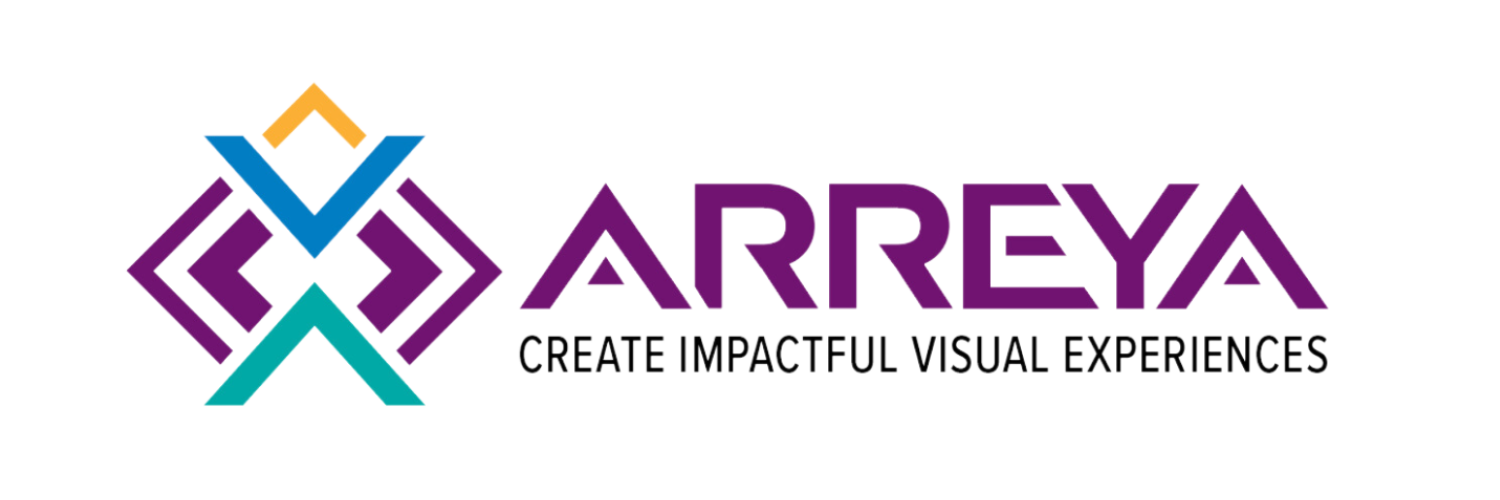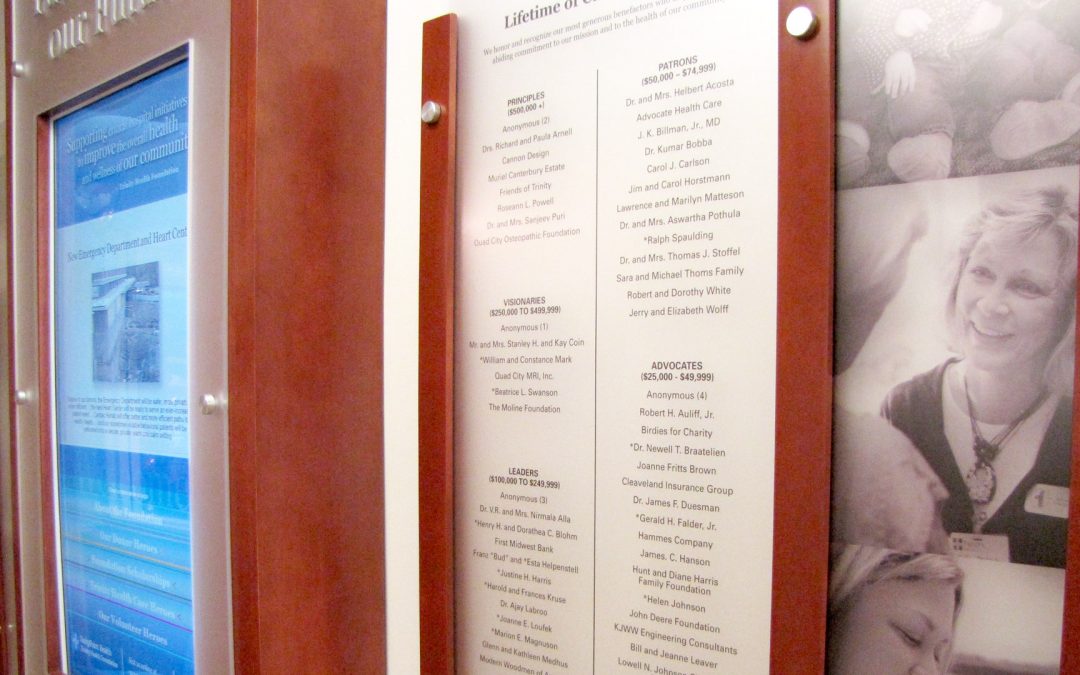
Presentations added a sleek new donor recognition wall to Trinity Health Systems.  Easy to update, the digital donor sign allows easy and remote interaction with the digital touchscreen to add new content through the cloud-based ARREYA digital signage software suite developed by Presentations. Custom designed and built to combine beautifully with Trinity Health Systems interior design, the new donor wall has clear panel prints that can be updated for annual giving campaigns. A great combination of static and digital make this the perfect donor wall.
Easy to update, the digital donor sign allows easy and remote interaction with the digital touchscreen to add new content through the cloud-based ARREYA digital signage software suite developed by Presentations. Custom designed and built to combine beautifully with Trinity Health Systems interior design, the new donor wall has clear panel prints that can be updated for annual giving campaigns. A great combination of static and digital make this the perfect donor wall.
Design, fabrication, electronics and installation are all done by Presentations, Inc. No subcontractors for Trinity Health to deal with later. Through their ARREYA digital signage software, the digital sign is viewable anywhere and at anytime on any smart device.
The three different hospital locations all boast the same donor display and play the same interactive content on touchscreens all through one ARREYA subscription.
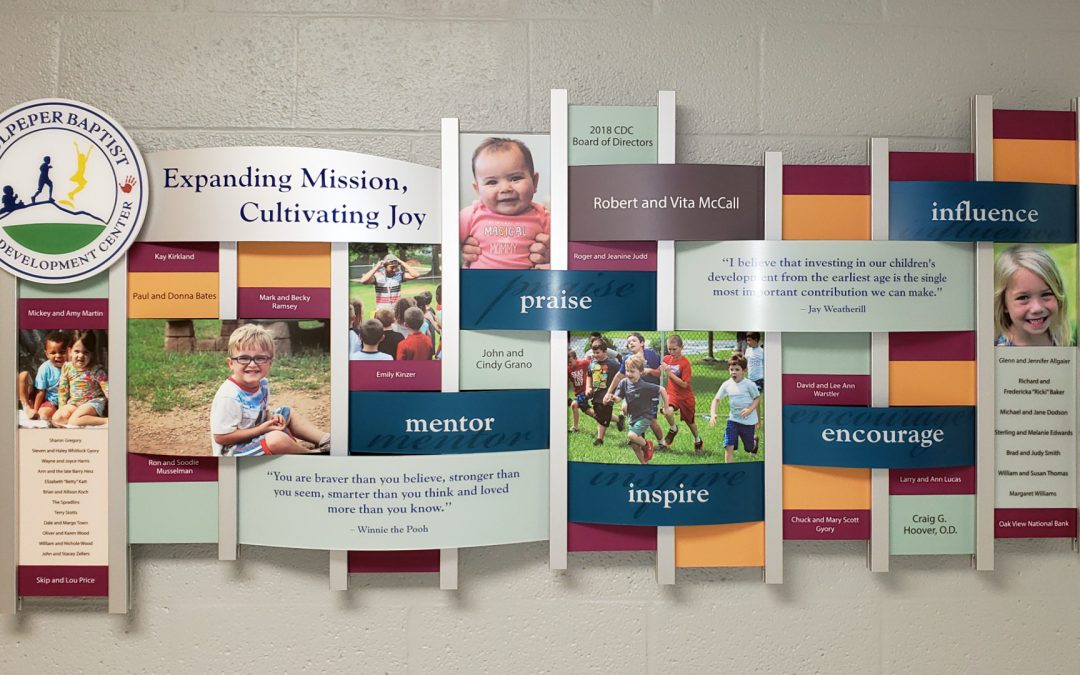
1. Plan Early
The time to think about donor recognition isn’t when you’re planning the celebration party. Include a recognition wall display cost in your total fundraising effort and be sure to integrate the design into your architectural and signage program.
2. Don’t make promises you can’t keep
In the throes of raising funds, different promises are often made to different people – some impossible to keep. Begin by setting guidelines on how gifts will be recognized on the donor wall.
3. Head off anomalies, but design for variables
Hospitals, churches and care facilities often receive “in loving memory of” gifts. To control the variability of these listings, provide criteria for how such gifts can be stated on the recognition display. At the same time, plan typography for the longest and shortest naming scenarios.
4. Decide between a finite campaign or living donor wall
Designers need to know the maximum number of donor names that will likely appear before beginning concept development. If the wall is for a single capital campaign, set a firm deadline for inclusion, so names can be alphabetized and placed into donation categories. Design living walls to remain aesthetically pleasing at any stage and be sure to place them in locations that will allow for growth.
5. Allocate a percentage of the budget
Set aside a percentage of the total building budget for the donor wall construction. Avoid the appearance of overspending, but keep in mind that attractive walls make donors feel appreciated and encourage others to give in the future.
6. Complement the architecture
Even when a donor wall is treated as stand-alone art, designers need to work closely with the architect, lighting engineer and signage designers. The finished piece should feel integral to the environment and complement the proportions, materials, finishes and colors of the space.
7. Maintain type consistency
Don’t try to list names in type sizes equivalent to the size of the donations. Color-coding is a common way of protecting typographic consistency.
8. Consider future fabrication
Make sure that materials and craftsmanship are available and can be matched five, 10, 15 years hence.
9. Consider daily upkeep of the donor wall
Take weather resistance, vandalism and maintenance into account before approving the design and location.
10. Proofread, then proofread again.
Imagine etching 1000 names on a single sheet of glass and finding a typo that will remain into perpetuity. Check with donors about unusual name spellings, then assign several people to proofread at every stage of the process.
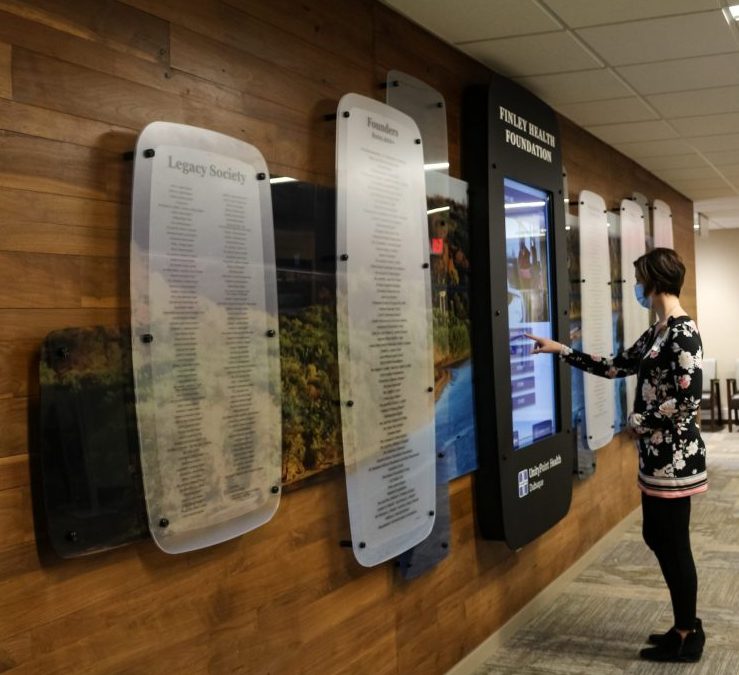
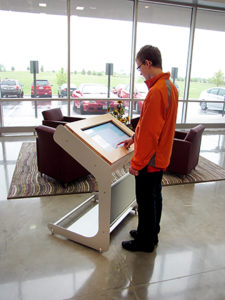 Congratulations! You made the decision to enter the world of digital signage. You purchased the necessary hardware and got it installed. You plug it in, turn it on and nothing…where is the content? Unlike television, digital signage doesn’t come with preprogrammed channels full of content, this needs to be designed and then formatted to work with your hardware and updated frequently.
Congratulations! You made the decision to enter the world of digital signage. You purchased the necessary hardware and got it installed. You plug it in, turn it on and nothing…where is the content? Unlike television, digital signage doesn’t come with preprogrammed channels full of content, this needs to be designed and then formatted to work with your hardware and updated frequently.
The first step to creating engaging content is to focus on two questions:
What do you want it to do?
Who is your audience?
The second step is to hire a graphic designer that has experience creating digital content templates in the correct formats. The templates will give you the layout of your pages and the flow of your information, including the correct placement of interactive buttons and widgets to meet ADA requirements all with branding that identifies with your organization and your audience. Once you have these original templates you can make changes to different areas of the templates.
Some of the digital signage media players come with editors, ready to create your own content, and are based on their own proprietary software. The editors are varied and the learning curve can be more than you are willing to tackle. Because of our own experience with third party players, we have created ARREYA, a digital signage software complete with user-friendly editor that doesn’t rely on hardware and is completely cloud-based. Whatever you decide, do your research and pick one that allows you to create the content you want and is easy for the people that will be doing the updates.
You can buy the most expensive hardware, but without engaging and well-designed content, you just wasted your money.
For more information about ARREYA Digital Signage Suite or to try the FREE trial, go to www.ARREYA.com or call 319-294-6671
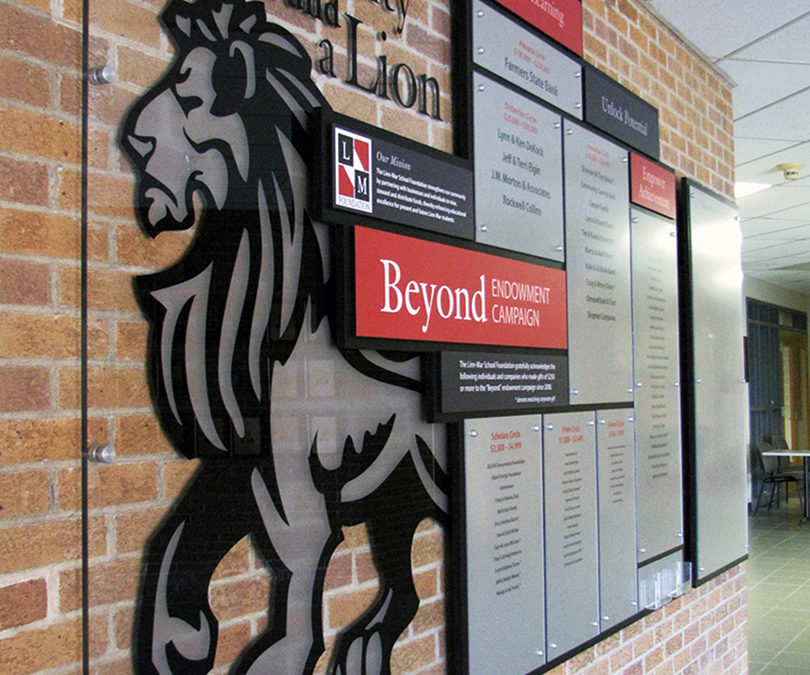
Set aside a percentage of the total building budget for the donor wall construction. Avoid the appearance of overspending, but keep in mind that attractive walls make donors feel appreciated and encourage others to give in the future.
On a major campaign, the total of all fundraising costs (consultant, feasibility, campaign management, printing, donor events, donor gifts, donor recognition wall, etc.) total 8% – 14% of the total goal of the campaign. The lower the campaign goal, the higher the percentage, and vice versa. The cost should be calculated based on the campaign goal, then added to the campaign total to know what the dollar amount raised needs to be.
Of that fundraising percentage, it is really up to you on how and where to allocate the funds. Donor recognition needs to be taken seriously, as the campaign donors are the future annual donors, and the organizations do not want to lose them. Bottom line – you need to spend enough on the public recognition to make the donors feel special, cared for, valued, and sufficiently recognized. Donor recognition is NOT a “throw-away” item.

 Easy to update, the digital donor sign allows easy and remote interaction with the digital touchscreen to add new content through the cloud-based ARREYA digital signage software suite developed by Presentations. Custom designed and built to combine beautifully with Trinity Health Systems interior design, the new donor wall has clear panel prints that can be updated for annual giving campaigns. A great combination of static and digital make this the perfect donor wall.
Easy to update, the digital donor sign allows easy and remote interaction with the digital touchscreen to add new content through the cloud-based ARREYA digital signage software suite developed by Presentations. Custom designed and built to combine beautifully with Trinity Health Systems interior design, the new donor wall has clear panel prints that can be updated for annual giving campaigns. A great combination of static and digital make this the perfect donor wall.